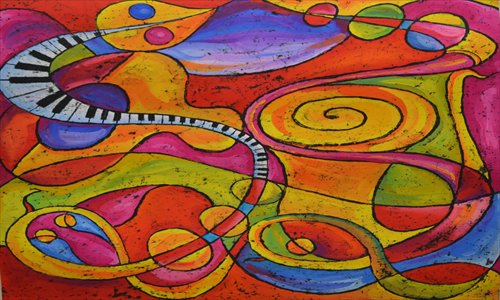China's snake stories - more good than bad

It is believed that this year, 2103, is a good year in which to be married. In Chinese the pronunciation of 2013 (Ai Ni Yi Sheng) can mean "I love you for all of my life" and the Shanghai Civil Affairs Bureau reports that 7,300 couples took this to be a good sign and had their marriages registered on January 4. The January 4 marriages exceeded the number registered on August 8, 2008, the opening day of Beijing Olympic Games, but are still behind the number recorded on October 10, 2010, where the date sounded like Shi Quan Shi Mei - "perfect in every way."
This coming Sunday marks the first day of the Chinese new year, the year of the snake, the sixth of the 12 Chinese zodiac animals. The snake is not as popular as the dragon but in Chinese culture it is not viewed with the negativity that surrounds it in other parts of the world.
Held in high regard
For thousands of years, the snake, regarded as a creature of treachery and evil in many other cultures, has been held in high regard in China. One of the early books of mythology Shan Hai Jing, literally "Classic of the Mountains and Seas," which was written before the Qin Dynasty (221BC-206BC), recorded many gods and goddesses being involved with snakes - the four gods of the sea all wore snakes as ornaments on their ears and used snakes to journey.
Fu Xi, a mythological figure regarded as one of Chinese civilization's ancestors, and his younger sister Nü Wa, who created humans from clay, were pictured as having snakes' bodies and human heads.
"The snake has long been regarded as a symbol of the great power of nature, and the ability to control snakes represents the ability to control nature," said Hua Xiaoying, an associate professor in Chinese culture at East China Normal University.
In China, snakes are usually called small dragons. Many believe that the dragon imagery was derived from snakes. Although dragons can sport horses' heads, deer horns, fish scales and the claws of eagles, the body is always that of a serpent. Snakes have also been a common totem in parts of China, like the Tujia ethnic group living around the borders of Sichuan, Guizhou and Hunan provinces. The ancient people who lived in today's Fujian Province used to have snake tattoos as a form of worship.
Today there are still several snake festivals and commemorative events in China. On the seventh day of the seventh month in the Chinese lunar calendar, the people from Zhanghu town in Fujian Province parade through the town carrying live snakes. After the festival the snakes are returned to the wild.
Seductress and magician
"There are also many images of snakes in Chinese culture, mythology, novels and operas," Hua said. The great Chinese novelist and poet Lu Xun wrote about a snake that in daytime possessed the face of a beautiful woman and seduced men only to kill them at night.
However, one of the four most popular legends in China, Bai She Zhuan (The Legend of the White Snake), presents a more positive image of a serpent. The legend recounts a touching love story involving Bai Suzhen, a beautiful magic snake and Xu Xian, a kindly man.
Some Chinese try to relate human characteristics with the zodiac animals and so can look disparagingly upon those born in the year of the snake or the rat. But for many, a person born in the year of the snake will be as clever and mysterious as the creature. "It's all in the imagination," Hua said.
To welcome the year of the snake, there are several exhibitions and events around Shanghai. The Zhu Qizhan Art Museum, in Hongkou district, has an annual exhibition dedicated to the current zodiac animal and the snake exhibition will be open until March 3.
All of the works on display feature snake themes and they include traditional Chinese ink and wash paintings, paper cuts, folk art by Jinshan district farmers and pottery artworks. The bright and simple Jinshan farmers' arts works were first noted in the early 1970s and have since become internationally acclaimed and popular. The works feature country life themes and meld different craft forms like painting, embroidery, paper cutting, and murals.
At the Shanghai Science and Technology Museum, the She Xing Tian Xia exhibition showcases snakes in various forms and as cultural icons. There are two live snakes and more than 50 different mounted examples on show along with a series of illustrations and multimedia displays showing the creatures in mythology and reality.
Look out for the spectacular skeleton of a three-meter snake, with 258 ribs and the species of snakes that have vanished from Shanghai over the years. This exhibition will be open until March 3 (the museum is closed from February 7 to 9 for the Spring Festival).
In Jiading district, the snake is being celebrated in a different manner in a multimedia musical and light show. Inspired by the Chinese music Jin She Kuang Wu (Dance of the Golden Snake), the artist Shi Jindian has created a giant installation of a cello at the Life Hub @ Anting. Suspended in air, the cello is constructed of iron wire and features red snake patterns.
Alongside the installation, classical Chinese traditional music will be played and artist Feng Jiangzhou's light show adds a new depth to the work. The show lasts for 20 minutes and will be performed daily from 5 pm to 9 pm. It closes on February 24.